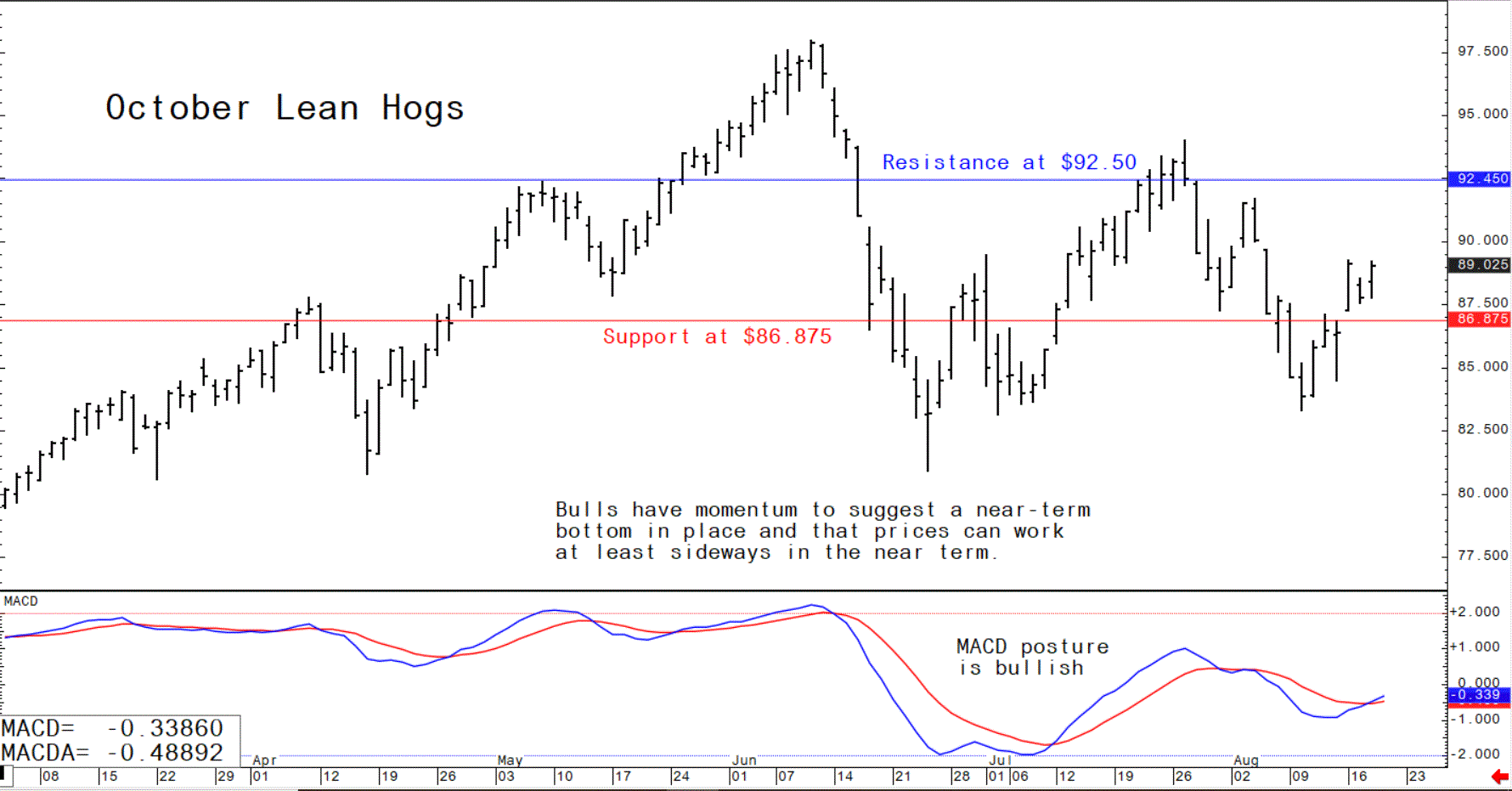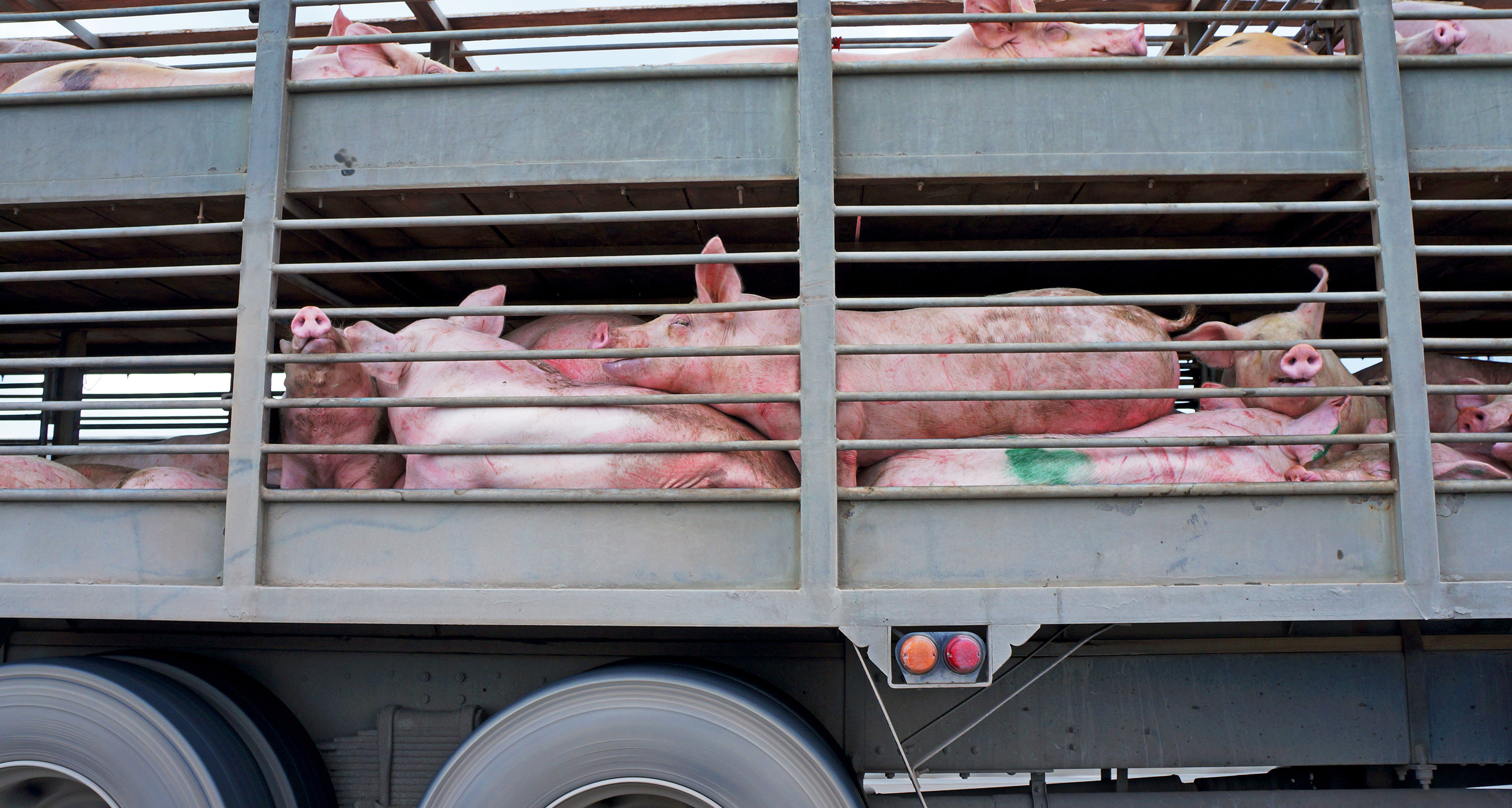



Pig outlook: Lean hog futures bulls work on price rebound
African swine fever cases emerge in Europe and the USDA lowers its pork production outlook.The pig trader's perspective
Nearby October lean hog futures this week have seen a good price rebound from the August low, to suggest a near-term market bottom is in place and that prices can now trade at least sideways, if not sideways to higher, in the near term. The strength in the US cattle and beef markets has aided lean hog futures market bulls.

© Jim Wyckoff
Some of this week’s hog futures strength could be tied to reports of an African swine fever outbreak at a large commercial operation in Bulgaria, which could foreshadow a European ASF outbreak. On the negative side, US hog supplies are rising seasonally. The Monday-Wednesday slaughter rose to 1.427 million head, reflecting a weekly increase of 25,000. Average hog weights in the Iowa/southern Minnesota market fell 0.8 lbs the week ending 14 August to 277.6 lbs, which is still 1.7 lbs lighter than last year at this point.
The next week’s likely high-low price trading ranges:
- October lean hog futures-$86.875 to $92.50 and with a sideways-higher bias
- December soybean meal futures-$347.00 to $370.00, and with a sideways-lower bias
- December corn futures-$5.32 1/4 to $5.73 and a sideways bias
Latest swine industry analysis from Asia
Philippines reports ASF cases declining
Active cases of African swine fever are declining and are confined to just 22 (0.7%) of the nearly 3,000 villages that have recorded outbreaks since 2019, the country’s ag ministry said.

It added that the drop in infections and the government-funded hog repopulation program puts the Philippines on track to produce a domestic surplus by 2023.
China’s sow herd contracts for first time in nearly two years
China’s sow herd declined 0.5% from June to July, the first decline in nearly two years, reports state media. But the herd was still up 25% from year-ago, according to China’s National Development and Reform Commission (CNDRC) spokesman Meng Wei.
The country had 45.6 million sows at the end of June, which was still up 2% from late 2017, before African swine fever hit. A dive in prices in recent months led to panic selling and producers have been working to get rid of unproductive sows.
An executive at China’s largest pork processor, WH Group, last week warned that the June liquidation of sows had been significant and could push live hog prices higher the second half of 2022. China’s total pig herd climbed 0.8% in July, with the herd now up 31% from year-ago, CNDRC reports.
Projections for the US pig sector
Latest livestock outlook from the USDA
Major destinations for US animal product exports in the first half of 2021 show 12% of US beef production was exported, with about three-quarters of that shipped to Asia.
The largest market for US pork is also Asia, accounting for just over half of pork exports in the first half of 2021. Pork exports accounted for 28% of domestic production. Only about 2% of US lamb and mutton production in the first half of 2021 was exported, with a large portion of that going to Mexico and more than half of exports being distributed elsewhere in the world.
Second-half 2021 pork production is reduced 321 million pounds to 13.9 billion pounds to reflect lower slaughter numbers. This production volume is 4.8% lower than that of a year ago.
First-quarter 2022 production is also reduced 44 million pounds to 7.2 billion pounds, almost 2% lower than a year earlier, also on expectations of lower available hog numbers.
US pork exports are expected to decline this year and next, largely because of lower shipments to China. Exports this year are expected to be 7.4 billion pounds, down 1.8% from a year ago. In 2022, pork exports are forecast at 7.3 billion pounds, almost 1.5% lower than anticipated shipments this year.

Slightly better US pork exports in latest week
USDA Thursday morning reported US pork net sales of 20,000 metric tonnes (MT) for 2021 were up 37% from the previous week, but down 31%
from the prior four-week average.
Increases primarily for Mexico (6,900 MT, including decreases of 700 MT), Japan (3,100 MT, including decreases of 300 MT), Colombia (3,000 MT, including decreases of 200 MT), Canada (2,300 MT, including decreases of 700 MT), and South Korea (1,500 MT, including decreases of 100 MT), were offset by reductions for Australia (200 MT).
Exports of 28,700 MT were up 4% from the previous week, but down 2% from the prior four-week average. The destinations were primarily to Mexico (13,500 MT), China (4,500 MT), Japan (4,300 MT), Canada (1,600 MT), and Colombia (1,400 MT).









